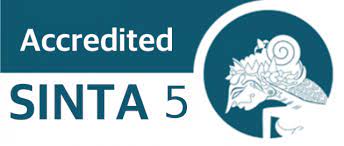Membangun Jalur Komunikasi Antara Darat Dengan Laut Via VSAT
DOI:
https://doi.org/10.31294/icej.v4i2.4982Keywords:
Network Management System, VSAT, SATELITEAbstract
PT. Bintang Khatulistiwa Internusa is one of the vendors engaged in providing infrastructure and internet services specifically for ships. Customers who sail often need internet services to transmit data and communicate with the head office in Jakarta, so it is necessary to develop communication infrastructure that can connect between land and sea, this is an important challenge in the current era of digitalization. Visat, a technology that utilizes satellites to transfer data, has emerged as a potential solution for creating effective and reliable communication lines. This study aims to explore the process of building communication lines via Vsat that connect land and sea. Through literature analysis and case studies, PT. Bintang Khatulistiwa Internusa takes advantage of Visat technology in overcoming the geographic and infrastructure challenges associated with building communications lines in hard-to-reach areas. We also consider the economic, social, and environmental implications of implementing this technology. The results show that Vsat has great potential to improve connectivity between land and sea, providing significant benefits in terms of economic growth, regional integration and availability of access to information. However, challenges such as implementation costs, data security, and infrastructure resilience remain major concerns that need to be addressed in efforts to implement communication channels through Visat. Thus, this research provides important insights for stakeholders to plan and implement more efficient and inclusive communications infrastructure in land and sea areas.
References
Agustina, Rini, and Dodit Suprianto. 2019. “Pelatihan Jaringan Untuk Guru Dan Siswa Smk Al Kaaffah Kepanjen Kabupaten Malang.” Jurnal Aplikasi Dan Inovasi Ipteks “Soliditas” (J-Solid) 2(1):1. doi: 10.31328/js.v2i1.1282.
Anon. n.d. “1-6-34-Alvian+Nugraha.”
Damayanty Heppi, Hapsah. 2023. “Peningkatan Keamanan Maritim Melalui Teknologi Deteksi Dan Pencegahan Kapal Berbahaya.” 6(2).
Dewi, Sari, and Rasyid Ibrahim. 2019. “QoS Dan Migrasi Remote VSAT Pada Jaringan WAN Di PT Semesta Citra.” IJCIT (Indonesian Journal on Computer and Information Technology) 4(2):182–88. doi: 10.31294/ijcit.v4i2.6246.
Muhammad Badrul dan Akmaludin (2019). n.d. “2-Artikel-Prosisko-Vol-6-No-2-Sept-2019.”
Nunggu, Hendrian, Nisa Nurhidayanti, and Univeristas Pelita Bangsa. 2023. “Ciptaan Disebarluaskan Di Bawah Lisensi Creative Commons Atribusi 4.0 Internasional. RANCANG BANGUN JARINGAN TELEKOMUNIKASI VSAT MENGGUNAKAN MODEM COMTECH H-PICO PADA PT APLIKANUSA LINTASARTA Program Studi Teknik Informatika 123 Fakultas Teknik 123.” Journal of Information System, Applied, Management, Accounting and Research 7(3):646–56. doi: 10.52362/jisamar.v7i3.1148.
Octavriana, Tania, Koko Joni, and Achmad Fiqhi Ibadillah. 2021. “OPTIMALISASI JARINGAN INTERNET DENGAN LOAD BALANCING PADA HIGH TRAFFIC NETWORK.” JURNAL TEKNIK INFORMATIKA 14(1):28–39. doi: 10.15408/jti.v14i1.15018.
Prahara, Sukma, and Irfan Ali. 2023. OPTIMALISASI JARINGAN INTERNET DENGAN OPTIMALISASI LOAD BALANCING MENGGUNAKAN PARAMETER QOS (Studi Kasus: SMK Bina Warga Lemahabang). Vol. 7.
Tarayana, Andhara Ersa. 2021. “Skkl Performance Analysis of Submarine Cable Communication System (Skkl) Edfa - Soa Amplifier Link Java – Bali Using Optisystem.” Journal of Telecommunication, Electronics, and Control Engineering (JTECE) 3(1):48–53. doi: 10.20895/jtece.v3i1.148.
Yosef, Germanus, Rugi Laka1, Luci Kanti Rahayu, and Yahdi Kusnadi. 2015. INSTALASI DAN KONFIGURASI JARINGAN VSAT MENGGUNAKAN MODEM GILAT PADA PT. INDO PRATAMA TELEGLOBAL JAKARTA. Vol. XII.
Downloads
Published
How to Cite
Issue
Section
License
Copyright (c) 2024 Deni, Ismail

This work is licensed under a Creative Commons Attribution-ShareAlike 4.0 International License.









